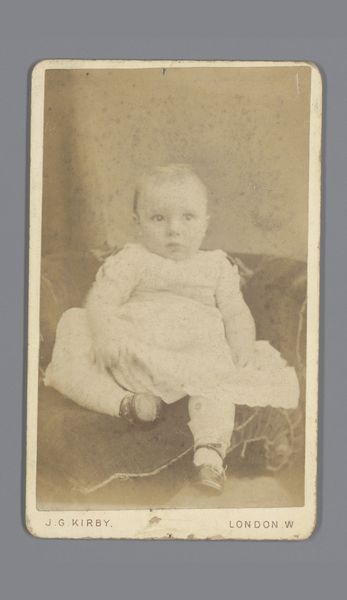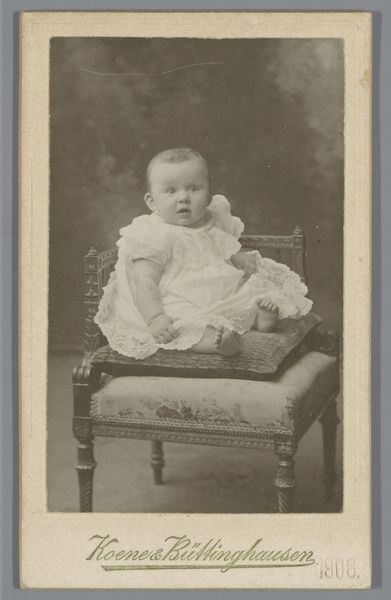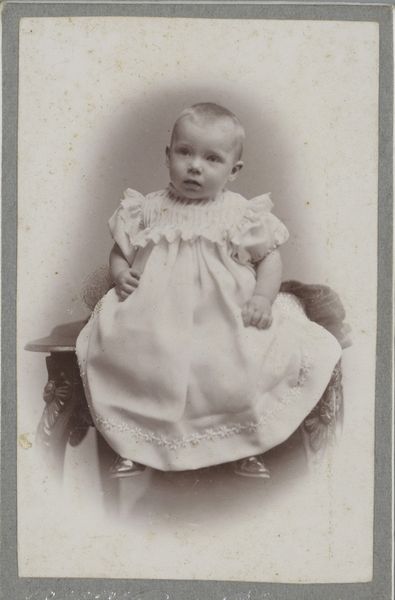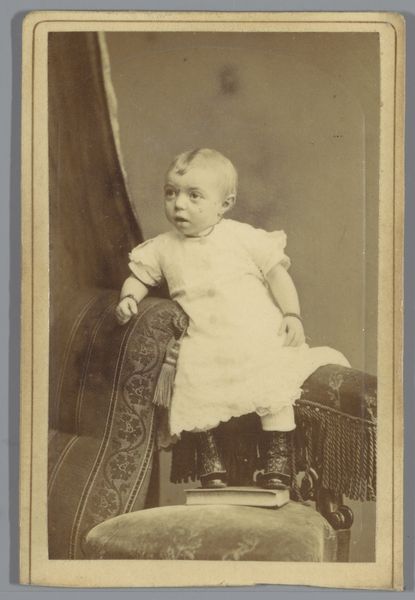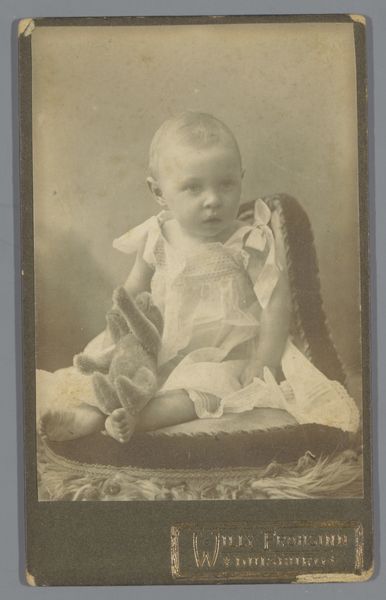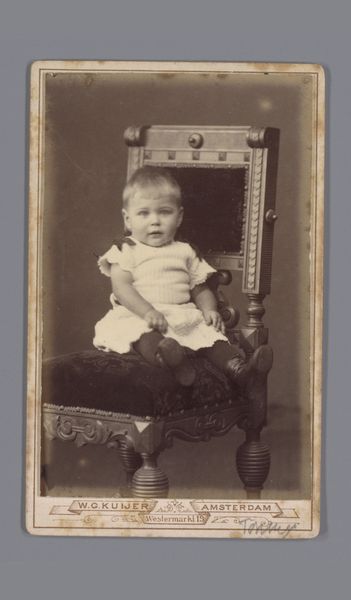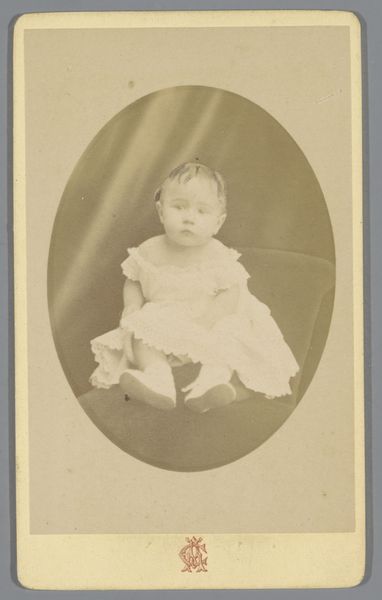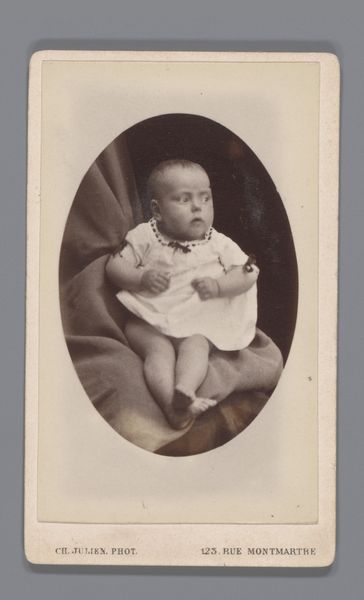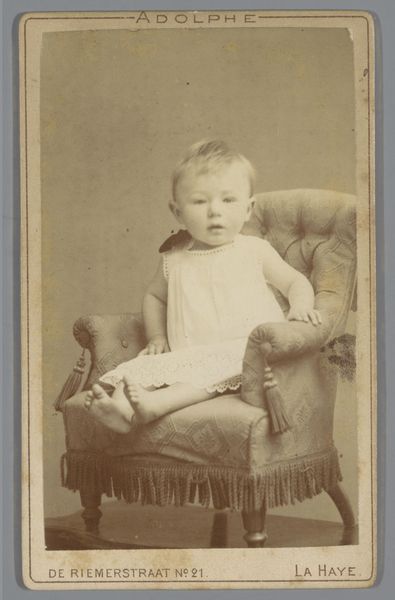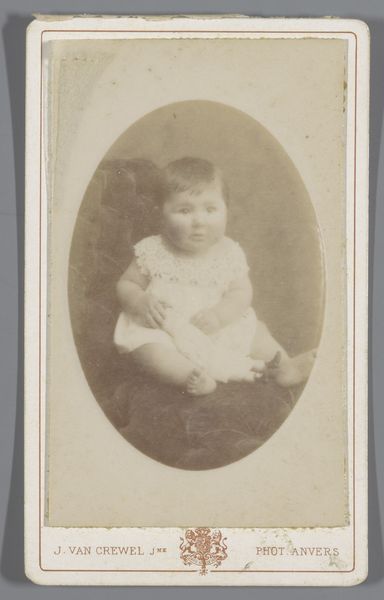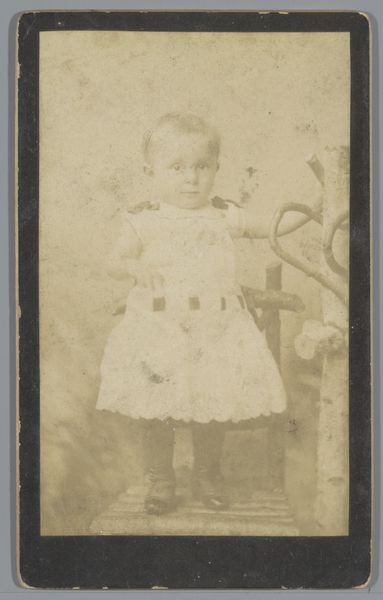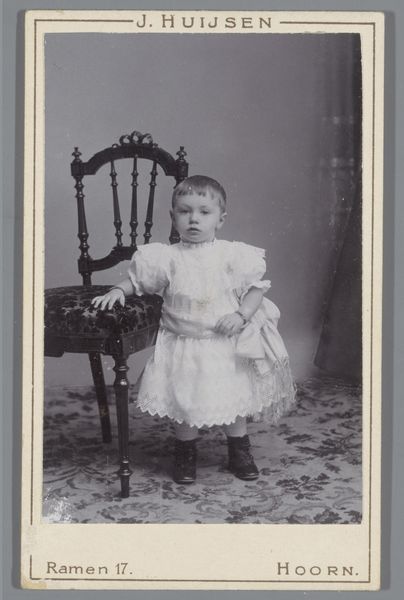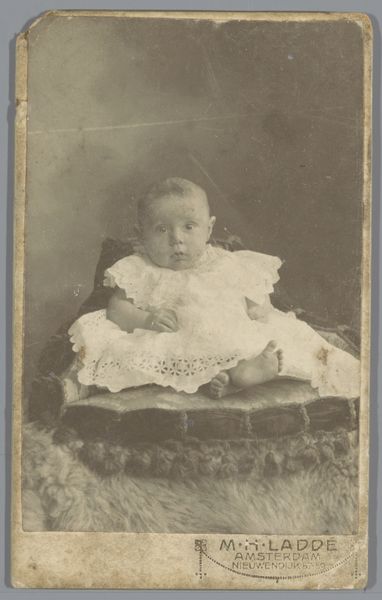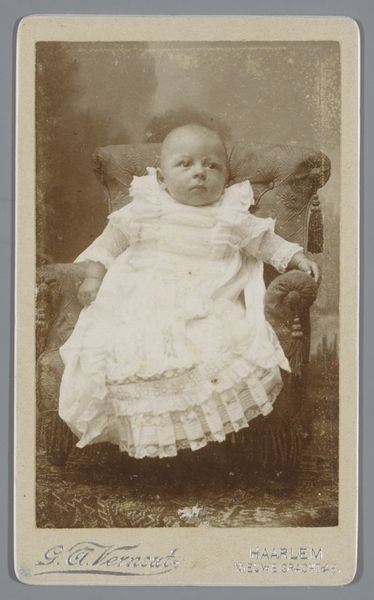
photography
#
portrait
#
photography
#
genre-painting
Dimensions: height 103 mm, width 63 mm
Copyright: Rijks Museum: Open Domain
Curator: This is an albumen print by Johannes Leonardus van der Heijden titled "Portrait of an Unknown Baby in a Chair." It was taken sometime between 1875 and 1900. Editor: The immediate feeling I get is one of posed innocence. It's that stark contrast between the rather serious gaze of the child and the elaborate, almost theatrical setting that's grabbing my attention. Curator: It’s important to understand that these photographic portraits were highly performative and circulated in specific social spheres. Studio photography like this was increasingly common and accessible, yet a carefully controlled practice meant to convey certain messages about social standing. The heavy armchair, the baby’s crisp, frilly dress... it all points towards middle-class values and aspirations. Editor: Absolutely. The rigidity of the pose reinforces that staged aspect. It brings to mind how portraiture of the time functioned, almost as a substitute for painted portraits for a rising class. The baby, essentially, is an accessory—a marker of family and perhaps even wealth. What do you make of the baby's direct stare, breaking the fourth wall, as it were? Curator: In a sense, it is a claiming of space, but a space assigned rather than assumed. Consider also, how child portraiture like this intersects with Victorian notions of purity and the idealised family unit, it subtly encodes gendered expectations even at such a young age. There's an implicit narrative here of belonging and societal expectation. The photo would very likely be part of a personal collection, as an image that solidified family bonds. Editor: Looking closely, I'm wondering about the relationship between this individual studio and its local context. "Singel 435, Hoek Heiligenweg", the photographer clearly advertised his specific, grounded address within Amsterdam society. That address creates a public-facing persona—one where this image takes part in that presentation of his craft and values. Curator: Precisely. This portrait speaks volumes about the socio-cultural context that framed not just art production, but also how families and individuals wanted to present themselves publicly. Editor: It’s fascinating how an ostensibly simple image of a baby can open up such complex discussions around identity and representation. Curator: Indeed, placing it within a broader framework of gendered performance allows us to appreciate how the political resonates through these seemingly mundane, personal photographs.
Comments
No comments
Be the first to comment and join the conversation on the ultimate creative platform.
